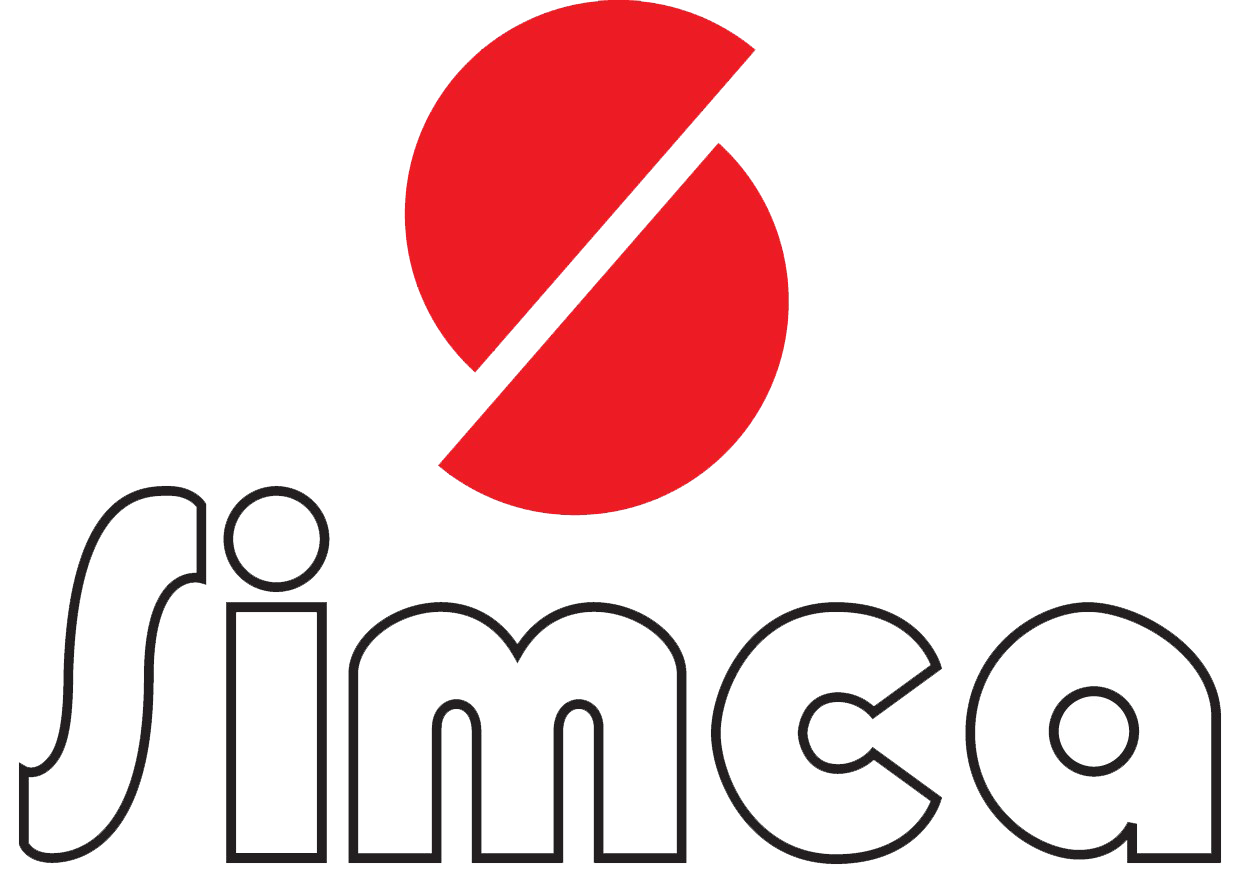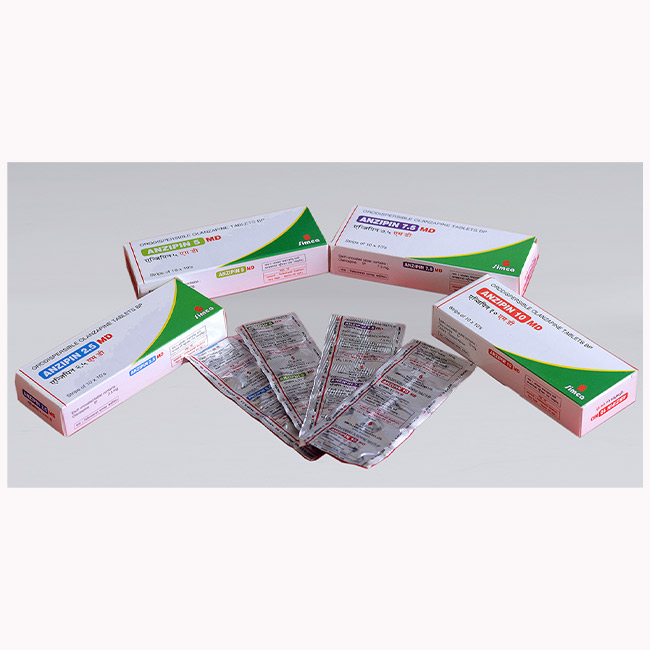Anzipin MD
Generic composition: Olanzapine
General description
Anzipin is classified as thiobenzodiazepine that belongs to atypical antipsychotics. It is available as mouth-dissolving (MD) tablets which mean the tablet rapidly disintegrates and dissolves in the mouth saliva, without the need of water or chewing, normally within 15 seconds to 3 minutes. The advantage of being mouth dissolving formulation means it can be dissolved in everyday solvents like water, curry etc for easy administration to uncooperative patients.
Therapeutic category
- Atypical Antipsychotics
Dosage forms available
- ANZIPIN MD 2.5mg Tablets
- ANZIPIN MD 5mg Tablets
- ANZIPIN MD 7.5mg Tablets
- ANZIPIN MD 10mg Tablets
Uses
- Schizophrenia
- Bipolar Disorder (Manic or Mixed phase).
Dosage
| Condition | Dose | |
| Schizophrenia | Adult | Initial 5-10 mg once daily, later 10 mg/day |
| Adolescent | Initial 2.5-5 mg once daily, later 10 mg/day | |
| Bipolar Disorder I | Adult | 10-15 mg once daily, later 10 mg/day |
| (manic and mixed episode) | Adolescent | Initial 2.5-5 mg once daily, later 10 mg/day |
* Olanzapine is not recommended for use in children and adolescents below 18 years of age due to a lack of data on safety and efficacy.
Mechanism of action
Olanzapine is an antipsychotic, antimanic and mood-stabilising. Olanzapine inhibits dopamine, serotonin, cholinergic and muscarinic receptors. Unlike some other antipsychotic agents, olanzapine increases responding in an “anxiolytic” test.
Pharmacokinetics
Absorption: Well absorbed after oral administration, food does not affect the rate or extent of absorption, peak plasma concentration in around 6 hours, 93% plasma protein bound,
Distribution: extensively distributed throughout the body, volume of distribution is 1000 liters
Metabolism: metabolized by liver and eliminated via urine.
Half-life: Half life is ranging between 21 to 54 hours.
Adverse effects
Dizziness, weight gain, Tardive dyskinesia (irreversible involuntary movements), orthostatic hypotension, agranulocytosis, neutropenia, anticholinergic side effects (dry mouth, blurred vision, urinary retention), hyperglycemia, dyslipidemia, drug-induced Parkinson disease.
Contraindications
- Hypersensitivity to the active substance or to any of the excipients.
- Patients with known risk of narrow-angle glaucoma
- Elderly Patients with Dementia-Related Psychosis; increased risk of death and increased incidence of cerebrovascular adverse events (e.g., stroke, transient ischemic attack)
- Lactation not recommended
Precautions
- Lower dose (5mg/day) should be considered for those 65 and over, hepatic impairment and renal impairment and dose is to be increased with caution.
- Increase in suicidal tendency
- Pregnancy category C
- A potentially fatal symptom complex referred to as Neuroleptic Malignant Syndrome (NMS) has been reported in association with administration of antipsychotic drugs, including olanzapine. Clinical manifestations of NMS are hyperpyrexia, muscle rigidity, altered mental status and evidence of autonomic instability (irregular pulse or blood pressure, tachycardia, diaphoresis and cardiac dysrhythmia).
- Patients with diabetes or borderline glucose level.
Interactions
- Benzodiazepines (e.g. Diazepam) and alcohol; May potentiate orthostatic hypotension
- Centrally acting drugs such as Carbamazepine, fluvoxamine, lorazepam (IM)
- Antihypertensive Agents: Enhanced antihypertensive effect
- Levodopa and Dopamine Agonists: May antagonize levodopa/dopamine agonists
Advantages of olanzapine
- Used to treat schizophrenia or mania with sedative or anxiolytic action
- Olanzapine demonstrated superior antipsychotic efficacy compared with haloperidol in acute phase of schizophrenia, and in the treatment of some patients with first-episode or treatment-resistant schizophrenia.
- Reduced risk of adverse events and therapeutic superiority compared with haloperidol and risperidone in the treatment of negative and depressive symptoms
- Since it is mouth dissolving, it is ideal in patients with compliance problem or dysphagia (difficulty in swallowing) like children, elderly or mentally disabled patients.


